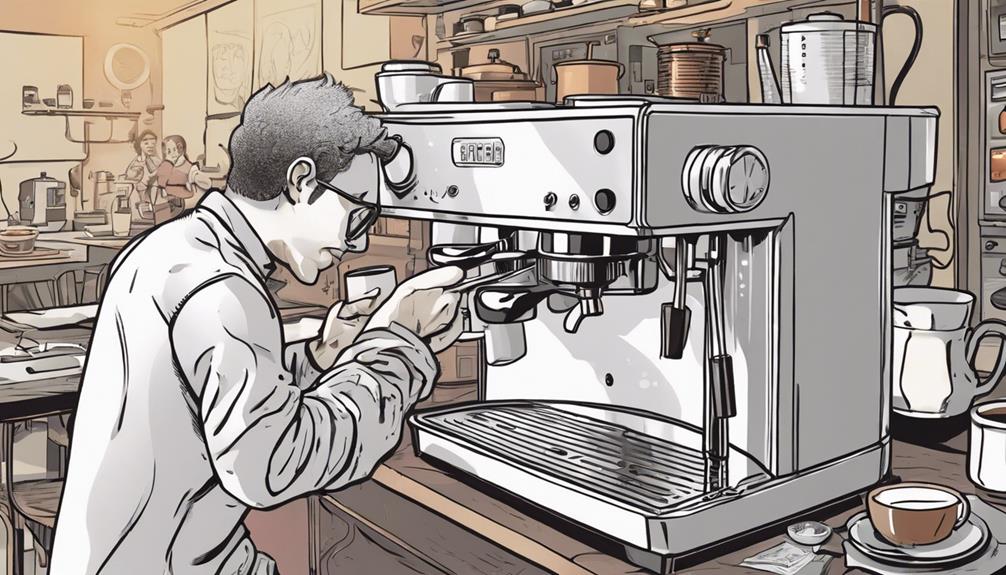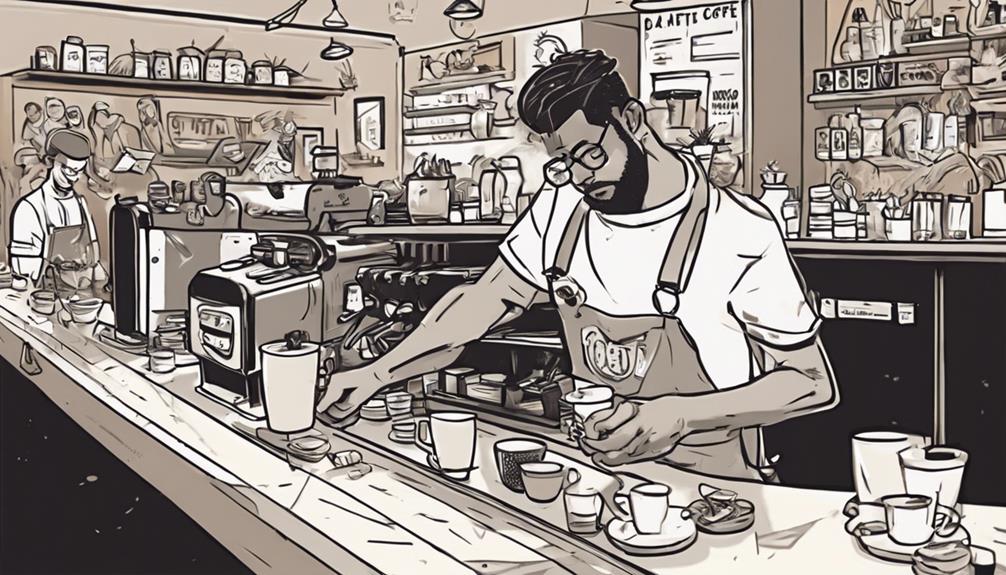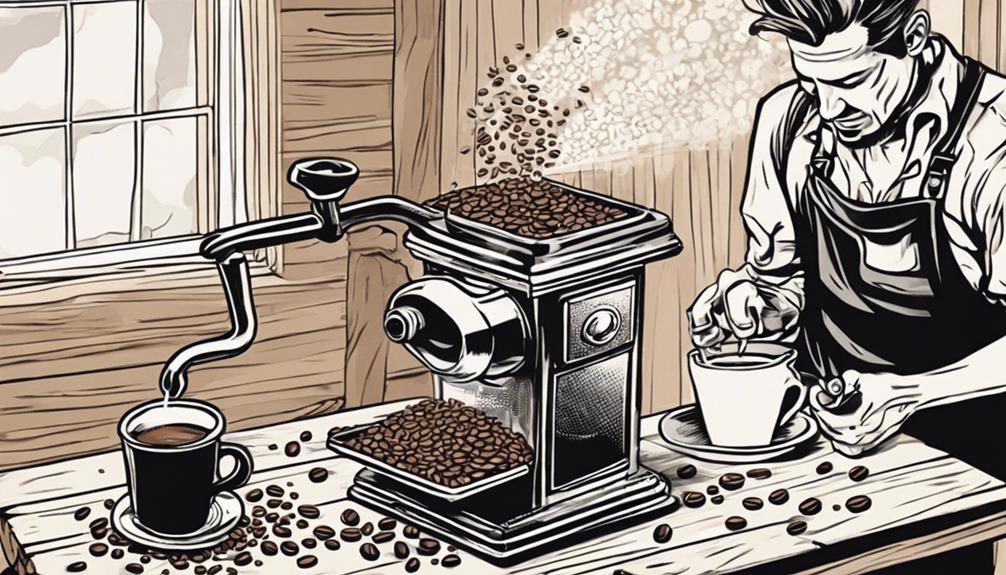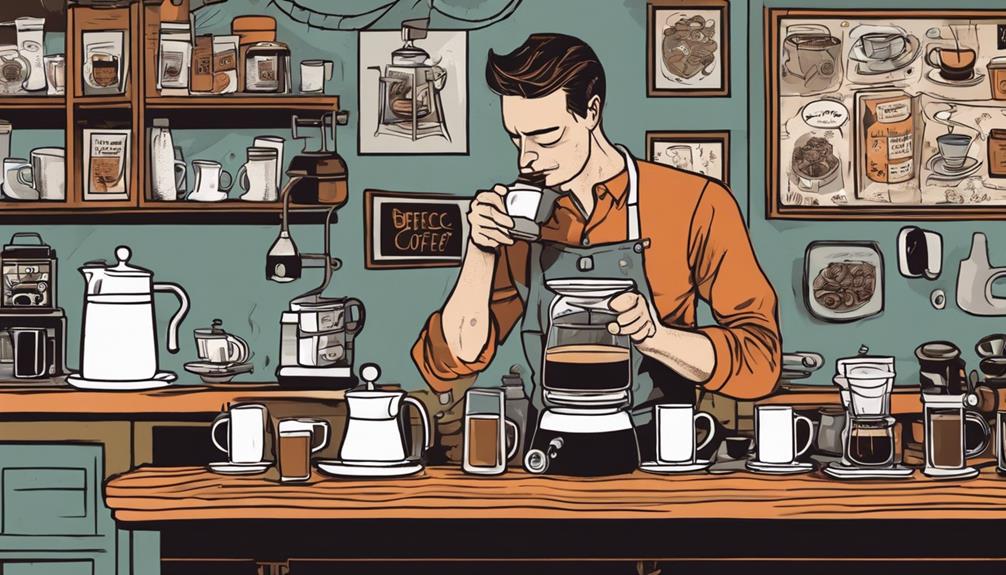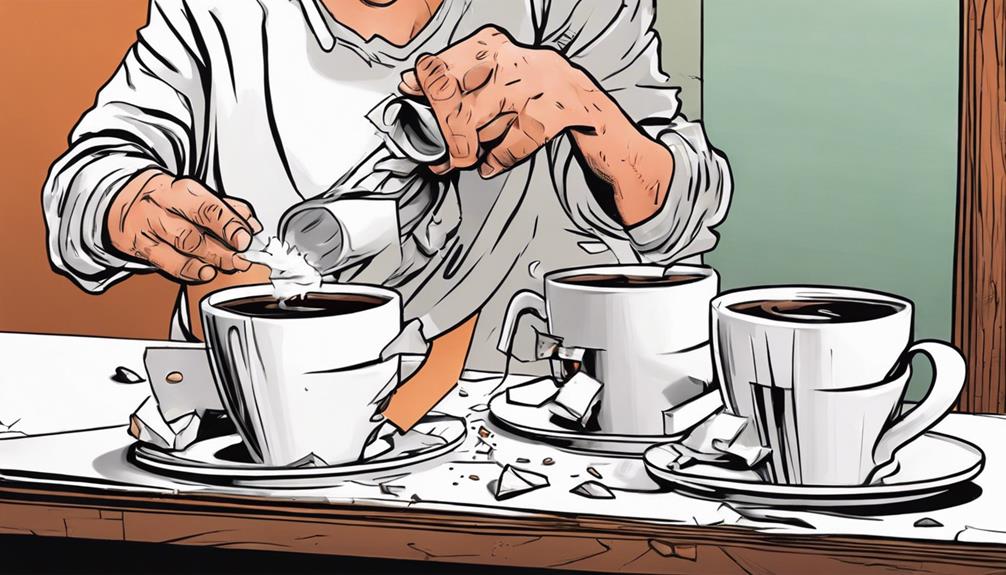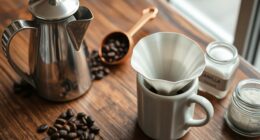To make the perfect cup of coffee, begin by heating up your espresso maker to ensure consistent shots. Adjust the grind size and measure the beans accurately. Pack the coffee grounds evenly for extraction. Focus on maintaining consistent tamping pressure. Aim to achieve a level surface after tamping for optimal results. Pull an excellent espresso shot with perfect extraction time. Fine-tune the grind size for a well-balanced flavor profile. Learn how to steam milk for creamy foam. Adjust the grinder settings to ensure a uniform grind size. Calibrate your coffee parameters to brew a delicious cup! Master each step to have a flawless coffee experience.
Key Takeaways
- Preheat machine for consistent shots and optimal extraction.
- Adjust grind size and precise bean measurement for balance.
- Ensure even tamping pressure and distribution for uniform extraction.
- Fine-tune grinder settings for flavor enhancement.
- Experiment with milk types and temperatures for flavor optimization.
Preheating Your Espresso Maker
To maintain consistent and flavorful espresso shots, preheat your espresso maker before brewing. Preheating your espresso machine is essential as it helps stabilize the temperature, ensuring best extraction of flavors from the coffee grounds.
This process minimizes temperature fluctuations during brewing, resulting in a better espresso shot overall.
Different espresso machines may require varying preheating times to reach their ideal brewing temperature. By neglecting to preheat your espresso maker, you risk ending up with under-extracted or over-extracted espresso shots, ultimately affecting the quality of your drink.
Taking the time to preheat your machine properly is a vital step in the espresso-making process.
Grind Size and Bean Measurement
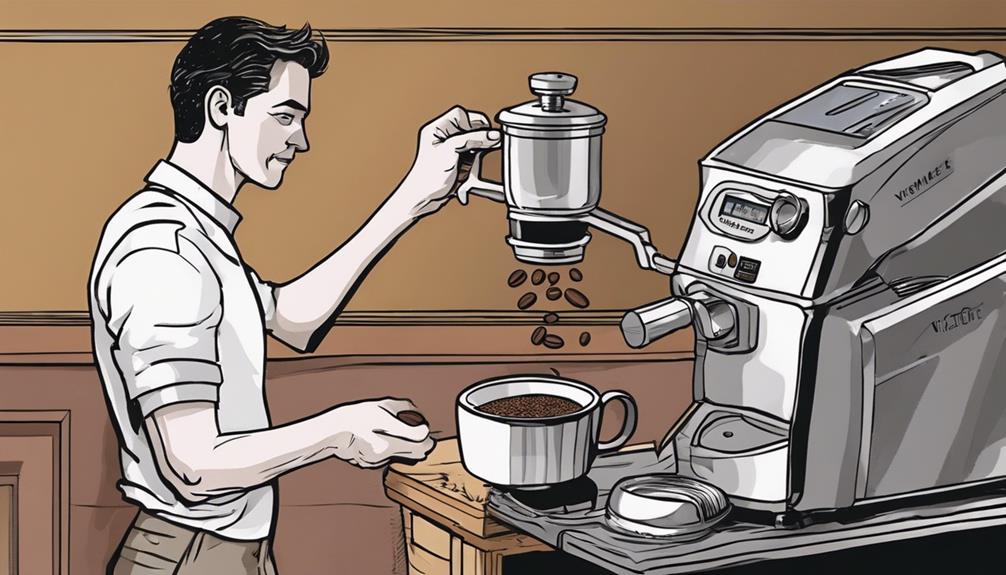
For consistent and flavorful coffee extraction, ensure precise bean measurement and adjust the grind size according to your machine's specifications.
Using a coffee scale guarantees you measure the exact amount of coffee beans needed, leading to consistency in flavor and extraction.
When it comes to grind size, remember that finely ground coffee beans are ideal for espresso machines, while coarser grinds work better for drip coffee makers.
Experiment with different grind sizes to find the best one that balances flavor extraction and brew time.
By adjusting the grind size based on your machine's requirements, you can achieve the desired extraction for a perfect cup of coffee.
Consistent bean measurement and grind size adjustments are key factors in mastering the art of brewing coffee with your espresso machine.
Compact Coffee Grounds Firmly
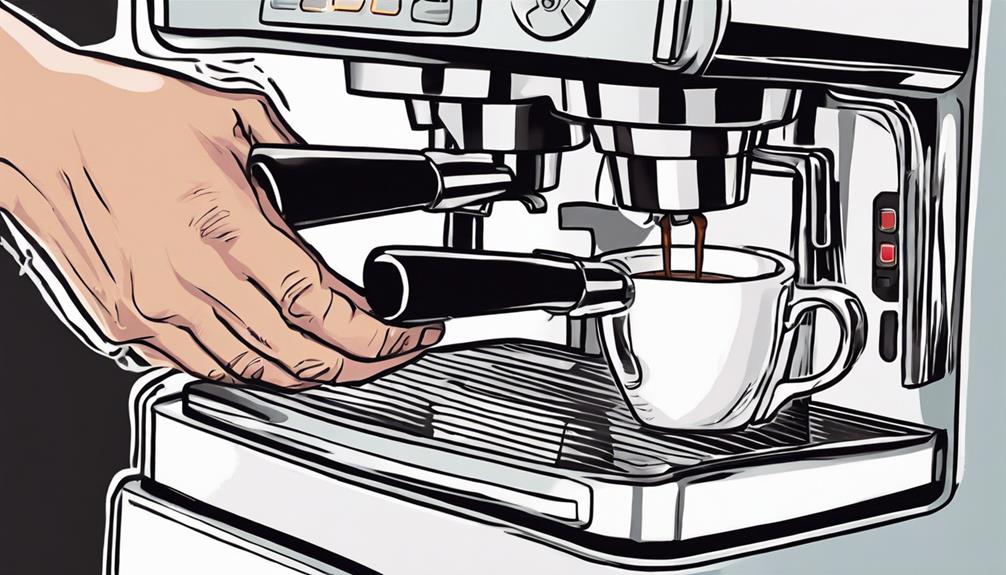
Compact the coffee grounds firmly in the portafilter to guarantee even extraction and a balanced espresso shot. Make sure to distribute the grind evenly, apply consistent tamping pressure, and achieve a level top after tamping for best results.
These key points will help you create a solid puck formation and promote efficient water flow through the coffee grounds during brewing.
Even Grind Distribution
Achieving even grind distribution in your coffee machine is vital for ensuring a consistent and balanced extraction process. When using an espresso grinder, it's important to evenly distribute the coffee grounds in the filter basket before tamping. This step sets the foundation for a consistent extraction by preventing channeling and ensuring that the grounds are uniformly saturated during the brewing process.
Unevenly distributed grounds can result in an imbalanced extraction, impacting the flavor of your espresso shot.
To master even grind distribution, focus on ensuring that the grounds are spread out uniformly in the filter basket before moving on to the tamping stage. Consistent and firm tamping after achieving even distribution helps create a stable coffee puck, further enhancing the extraction process.
Consistent Tamping Pressure
Maintain that your tamping pressure stays consistent to achieve peak espresso extraction results. The tamping pressure plays an important role in guaranteeing even extraction of your double shot. Typically ranging from 30-40 pounds of force, this pressure must be applied consistently.
Inconsistent tamping can lead to channeling, where water takes the path of least resistance, resulting in uneven extraction. To help achieve uniform tamping pressure, consider using a calibrated tamper or a distribution tool.
Remember, tamping too lightly can lead to under-extracted espresso, while tamping too hard can cause over-extraction, altering the taste of your coffee. By mastering proper tamping technique, you guarantee a level and compact puck, which is essential for best espresso extraction.
Level Top After Tamping
To guarantee ideal extraction, make sure the top of your coffee grounds in the portafilter is level after tamping. Achieving a level top ensures even extraction, preventing channeling and resulting in a well-balanced espresso shot. Improper tamping can lead to under-extraction if too light or over-extraction if too hard. By creating a level top, you allow water to flow evenly through the coffee grounds, enhancing flavor extraction and maintaining consistent pressure during the extraction process.
| Importance of Level Top After Tamping |
|---|
| Prevents channeling |
| Ensures even extraction |
| Enhances flavor extraction |
Pulling the Perfect Espresso Shot
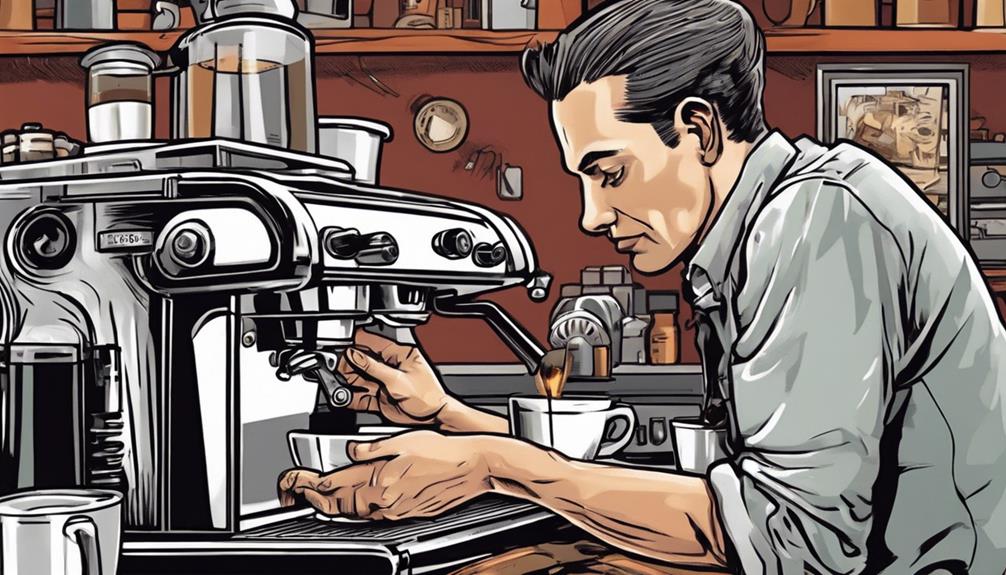
To achieve the ideal espresso shot, focus on factors like shot extraction time and grind size adjustment. These elements play a pivotal role in determining the flavor and quality of your espresso.
Make sure to pull your shot within the recommended time frame and adjust your grind size accordingly for best results.
Shot Extraction Time
Achieving the perfect espresso shot hinges greatly on mastering the shot extraction time, typically falling between 20-30 seconds. The extraction time plays an essential role in determining the balance of flavors and the overall quality of your espresso shot.
Here's how you can optimize your shot extraction time to ensure it is on point:
- Monitor Consistently: Keep an eye on the extraction time to ensure it stays within the 20-30 seconds range for best flavor extraction.
- Taste Test: Regularly taste your espresso shots to gauge the quality and adjust extraction time if needed.
- Make Adjustments: If your shot is under-extracted and tastes sour, grind finer to slow down extraction. Conversely, if it's over-extracted and bitter, opt for a coarser grind to speed it up.
Grind Size Adjustment
Adjusting the grind size on your coffee machine plays a vital role in fine-tuning your espresso shot to perfection.
To pull the perfect espresso shot, you must fine-tune your coffee grinder to achieve the ideal extraction time. Grinding your coffee to a finer consistency will slow down the extraction process, allowing for a more intense and flavorful shot.
Conversely, a coarser grind size will speed up extraction, resulting in a lighter and potentially weaker espresso. It's essential to experiment with different grind sizes to strike the right balance between flavor, strength, and extraction time for your ideal espresso shot.
Dialing In Your Espresso
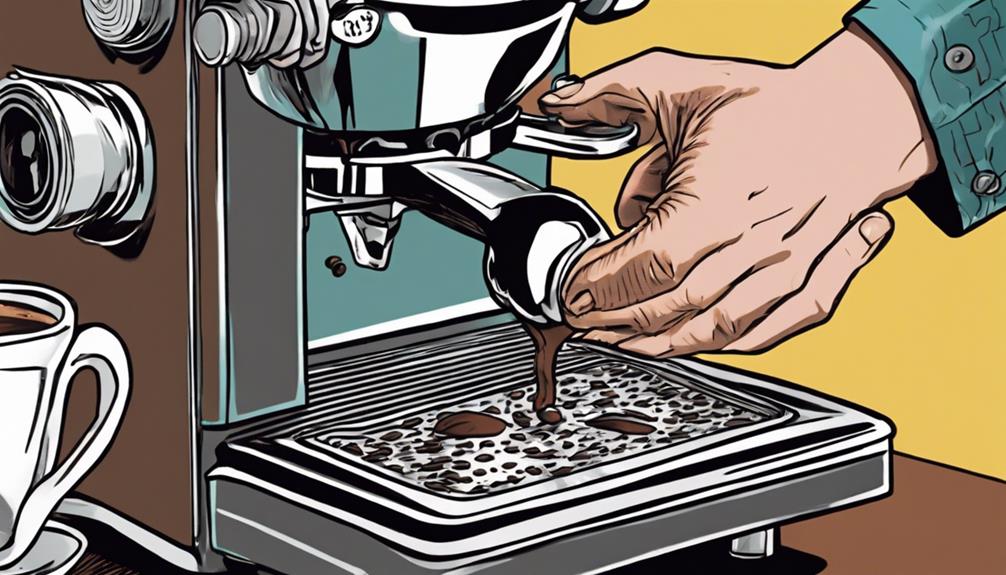
Start by setting your grinder to a fine espresso grind size to guarantee a slow and steady extraction process. Once you have the grind size dialed in, focus on adjusting the dose weight and monitoring the extraction time to perfect your espresso shot.
Here's a quick guide to help you master the art of dialing in your espresso:
- Fine Grind Size: The right grind size is essential for espresso. A fine grind ensures proper extraction, allowing the flavors to fully develop in your shot.
- Dose Weight: Experiment with different dose weights to find the ideal amount of coffee for your taste preferences. Adjusting the dose can greatly impact the strength and flavor of your espresso.
- Extraction Time: Keep a close eye on the extraction time, aiming for a total brew time of 25-30 seconds. Monitoring the extraction time helps you achieve a well-balanced and flavorful shot.
Steaming Milk for Espresso Drinks
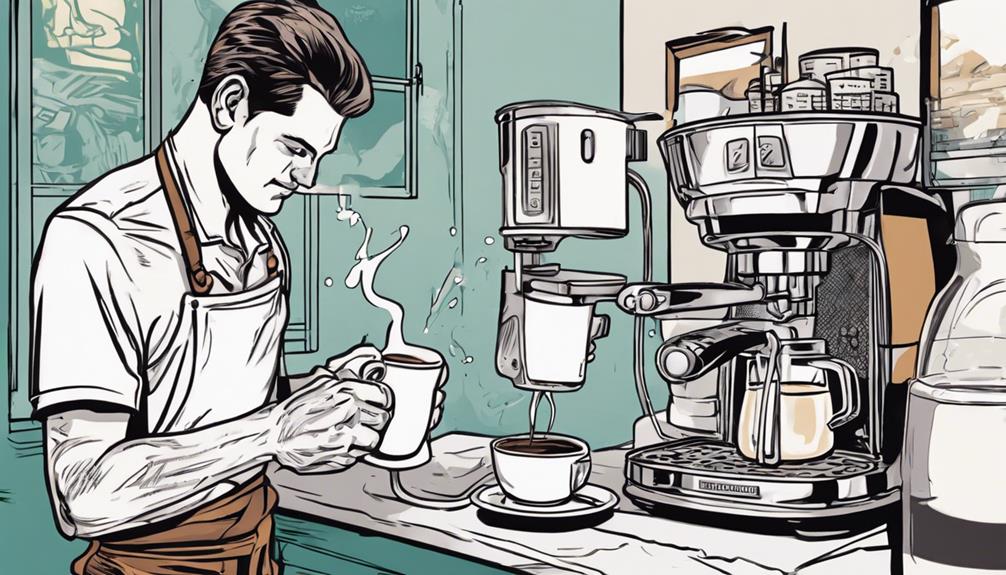
To enhance the quality of your espresso drinks, mastering the technique of steaming milk is essential. When steaming milk for your espresso beverages, remember to submerge the steam wand tip slightly below the surface of the milk. This technique helps create creamy foam, adding a rich and velvety texture to your drinks. Adjust the steam wand's positioning and angle to control the level of frothiness in the milk.
Practice is key to finding the perfect balance that suits your preferences. To guarantee the best taste in your espresso drinks, keep the steam wand clean. Residue buildup can introduce off-flavors that affect the overall quality of your steamed milk. Experiment with different types of milk and temperatures to discover the ideal combination for lattes, cappuccinos, and other milk-based espresso beverages.
Adjusting the Espresso Grinder
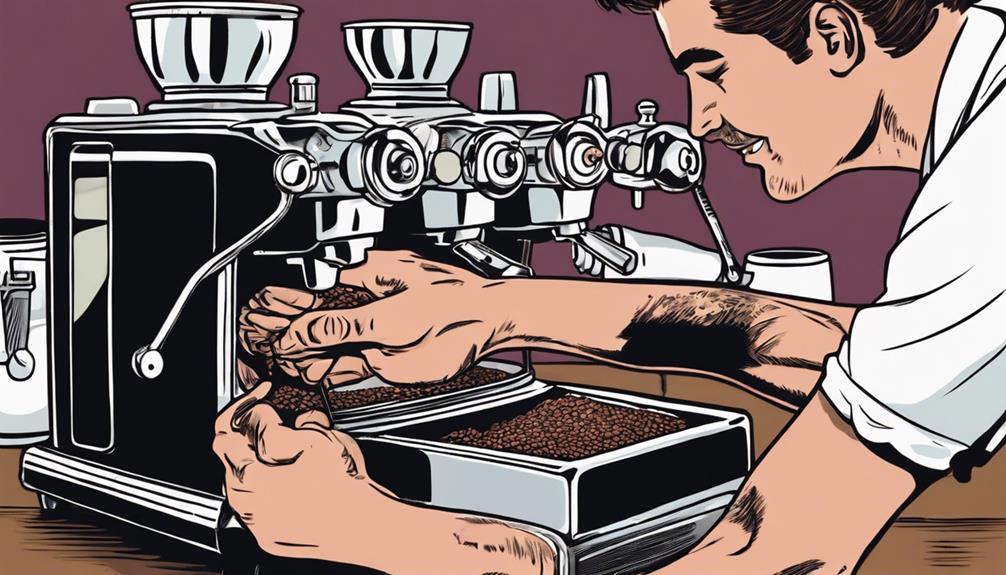
When fine-tuning your espresso grinder, focus on controlling the grind size to influence the extraction process and enhance the flavor of your espresso shots.
Here are some key points to take into account:
- Adjusting the Espresso Grinder: Tweaking the grinder settings allows you to determine the coarseness or fineness of the coffee grounds, impacting how quickly water flows through them during extraction.
- Grind Size and Extraction Process: The grind size directly affects the surface area of the coffee particles and the rate of extraction. Finding the right balance ensures efficient extraction, contributing to a well-rounded flavor profile in your espresso.
- Enhancing Flavor Profile: Experimenting with different grind sizes enables you to fine-tune the extraction time and adjust the strength and taste of your espresso. Consistency in grind size is crucial to maintaining a delicious and consistent flavor in your coffee.
Mastering the art of adjusting the espresso grinder empowers you to craft a personalized coffee experience tailored to your preferences.
Calibrating Coffee Parameters
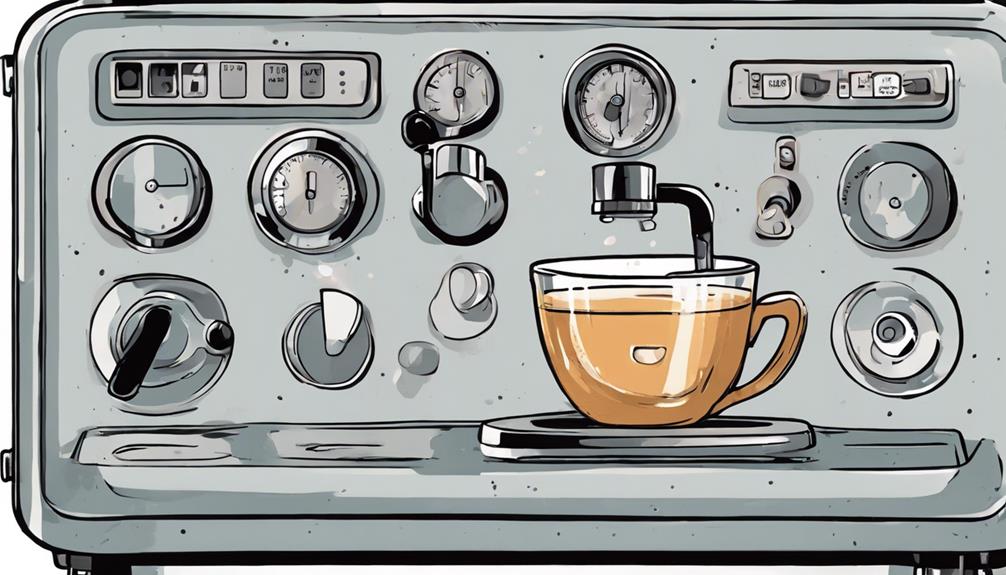
Adjusting your espresso grinder is just the beginning; now, it's time to focus on calibrating coffee parameters to achieve the perfect espresso shot. When fine-tuning your home espresso machine, paying attention to variables like the amount of coffee, how your grinder is set, and the yield out is vital for crafting exceptional shots of espresso. Here's a breakdown of how these parameters interplay in the quest for the perfect brew:
| Coffee Parameter | Description | Importance |
|---|---|---|
| Amount of Coffee | Determines the strength and flavor intensity of the shot. | Essential for taste consistency |
| Grinder Setting | Affects the extraction rate and overall flavor profile. | Precision is key |
| Shots of Espresso | Number of shots pulled affects the coffee-to-water ratio. | Consistency is essential |
Mastering the calibration of these coffee parameters will empower you to consistently produce high-quality espresso that delights your taste buds.
Frequently Asked Questions
How to Make the Perfect Cup of Coffee in a Coffee Maker?
To make the perfect cup of coffee in a coffee maker, use a 1:15 coffee-to-water ratio, grind beans medium-coarse, preheat to 195-205°F, let it bloom for 30 seconds, and adjust brewing times for your desired flavor balance.
What Is the Perfect Grind Setting?
So, what's the perfect grind setting? Well, it's that fine and powdery goodness, akin to table salt. Remember, adjusting it impacts extraction speed. Experiment, find your taste, and cater to your machine for that ideal shot.
How to Adjust Coffee Brewing?
To adjust coffee brewing, tweak your brewing temperature for flavor control. Adjust grind size to dial in extraction rate and strength. Experiment with coffee-to-water ratio for balance. Fine-tune extraction time for intensity. Consider water pressure for body and mouthfeel.
How to Make Strong Coffee With a Coffee Maker?
To brew stronger coffee with a coffee maker, aim for a higher coffee to water ratio. Choose dark roast beans, grind finer, and let it steep longer. For an even bolder cup, experiment with alternative methods like a French press.
Conclusion
Now that you've mastered the art of adjusting your coffee machine, you're ready to take on the world of perfect coffee. Whether you prefer a bold and robust cup of joe or a more delicate and subtle brew, adjusting keurig coffee strength will allow you to tailor your coffee exactly to your preferences. With just a few simple tweaks to the settings, you can unlock a whole new world of flavors and aromas in your coffee, making every morning a delightful experience. So go ahead, experiment with different strength levels and discover the perfect cup of coffee that will kickstart your day with a burst of energy and satisfaction.
Just like a well-oiled machine, your espresso maker is now finely tuned to deliver the best brew every time.
So go ahead, make yourself a cup of coffee and enjoy the symphony of flavors that only a perfectly adjusted machine can provide.
Cheers to your coffee mastery!
